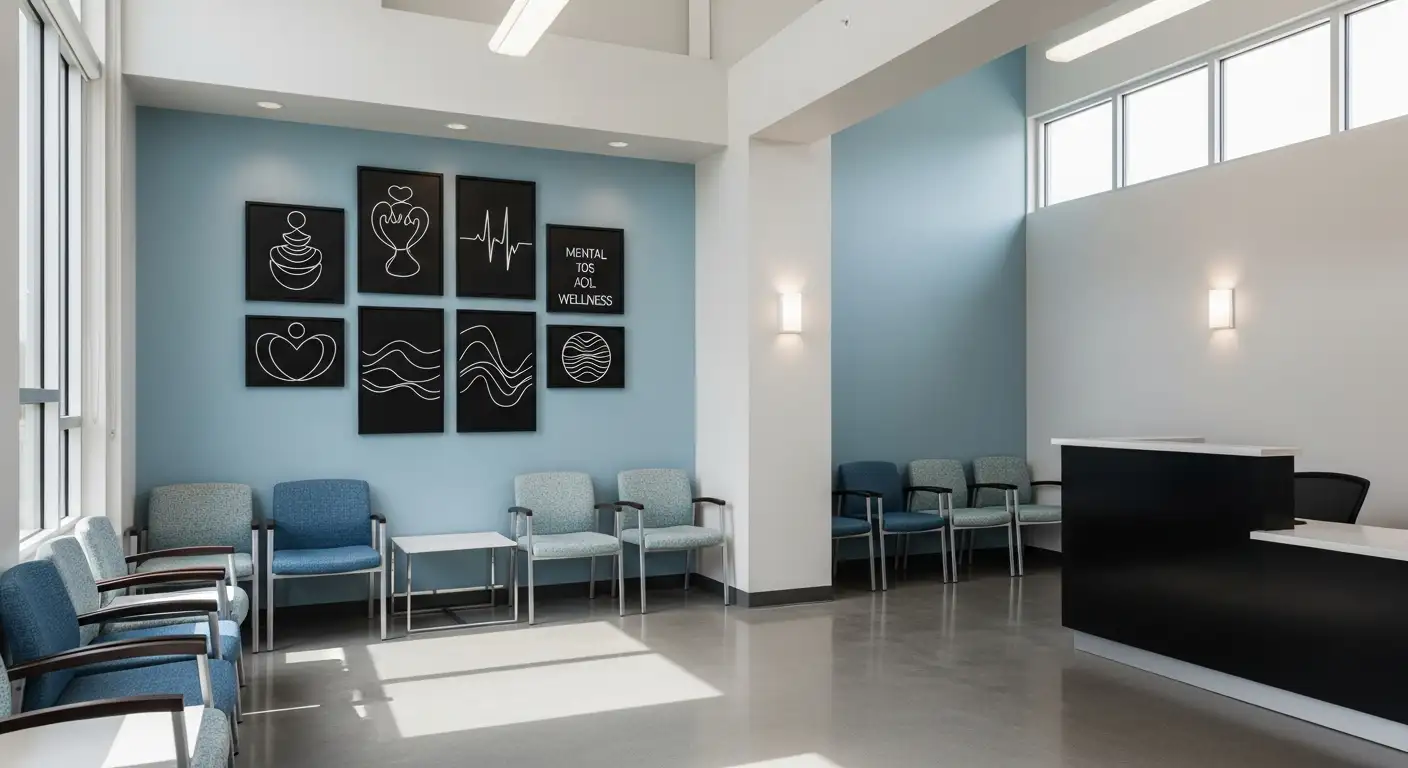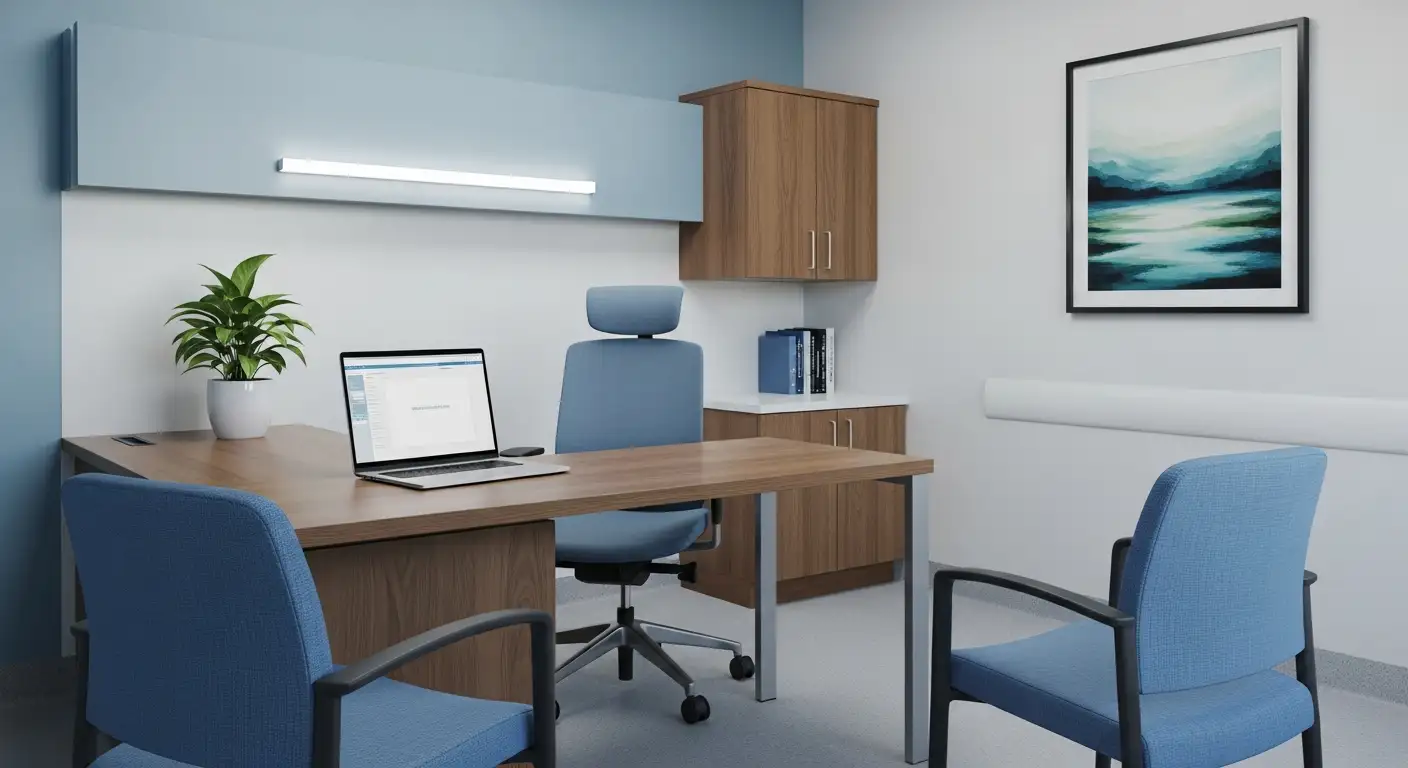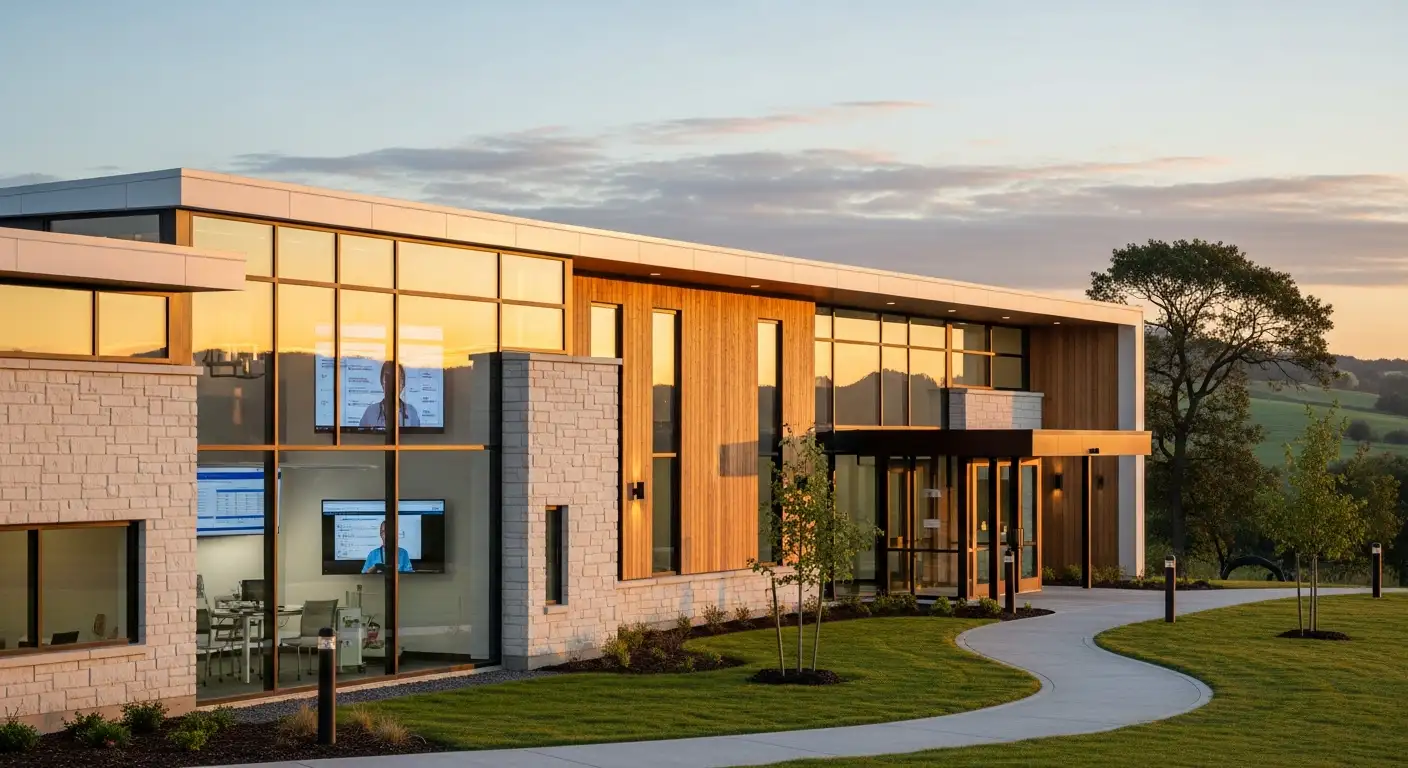Understanding the Importance of Behavior Response Teams in Skilled Nursing Facilities
Skilled nursing facilities (SNFs) face increasing challenges in managing behaviors associated with cognitive impairments, mental health conditions, and other complex needs. Creating a structured, effective Behavior Response Team (BRT) is essential for ensuring resident safety, improving staff confidence, and promoting positive behavioral outcomes. This article explores best practices, implementation strategies, ethical considerations, and resources to develop a comprehensive BRT in skilled nursing environments.
Defining the Role of Behavior Response Teams in Skilled Nursing Facilities

What is a Behavioral Emergency Response Team (BERT)?
A Behavioral Emergency Response Team (BERT) is a specialized group assembled to address urgent behavioral crises within healthcare settings, particularly in nursing facilities. These crises may include psychiatric emergencies, aggressive behaviors, or disruptive verbal conflicts.
BERTs operate as multidisciplinary units, combining trained clinicians skilled in de-escalation techniques with security personnel to balance compassionate care with safety. Their primary goal is to respond quickly and effectively to prevent injuries, manage behavioral escalation, and support staff and residents during volatile situations.
Since behavioral emergencies often pose both safety and ethical challenges, BERTs are designed to prioritize the dignity of residents while maintaining a secure environment.
What are best practices for establishing a Behavior Response Team?
Creating an effective BERT involves several strategic steps. First, assembling a diverse team that includes licensed healthcare providers, mental health professionals, and security staff ensures a comprehensive response capability.
Regularly scheduled training sessions in de-escalation, trauma-informed care, and communication skills are essential. These sessions should include simulations to prepare team members for real-life scenarios.
Clear protocols for activation are critical. Criteria should specify behaviors such as aggressive yelling, threatening gestures, or physical attacks that warrant calling the team. These guidelines help staff respond consistently and calmly.
Fostering a culture of safety and collaboration encourages staff to feel empowered to activate the team whenever necessary.
Post-incident debriefings are vital for learning and continuous improvement. Analyzing responses to behavioral crises helps refine intervention strategies, update protocols, and enhance staff confidence.
Implementing these best practices creates a responsive, compassionate environment that effectively manages behavioral emergencies, protects residents and staff, and upholds ethical standards of care.
Implementing a BRT: Steps, Activation, and Protocols
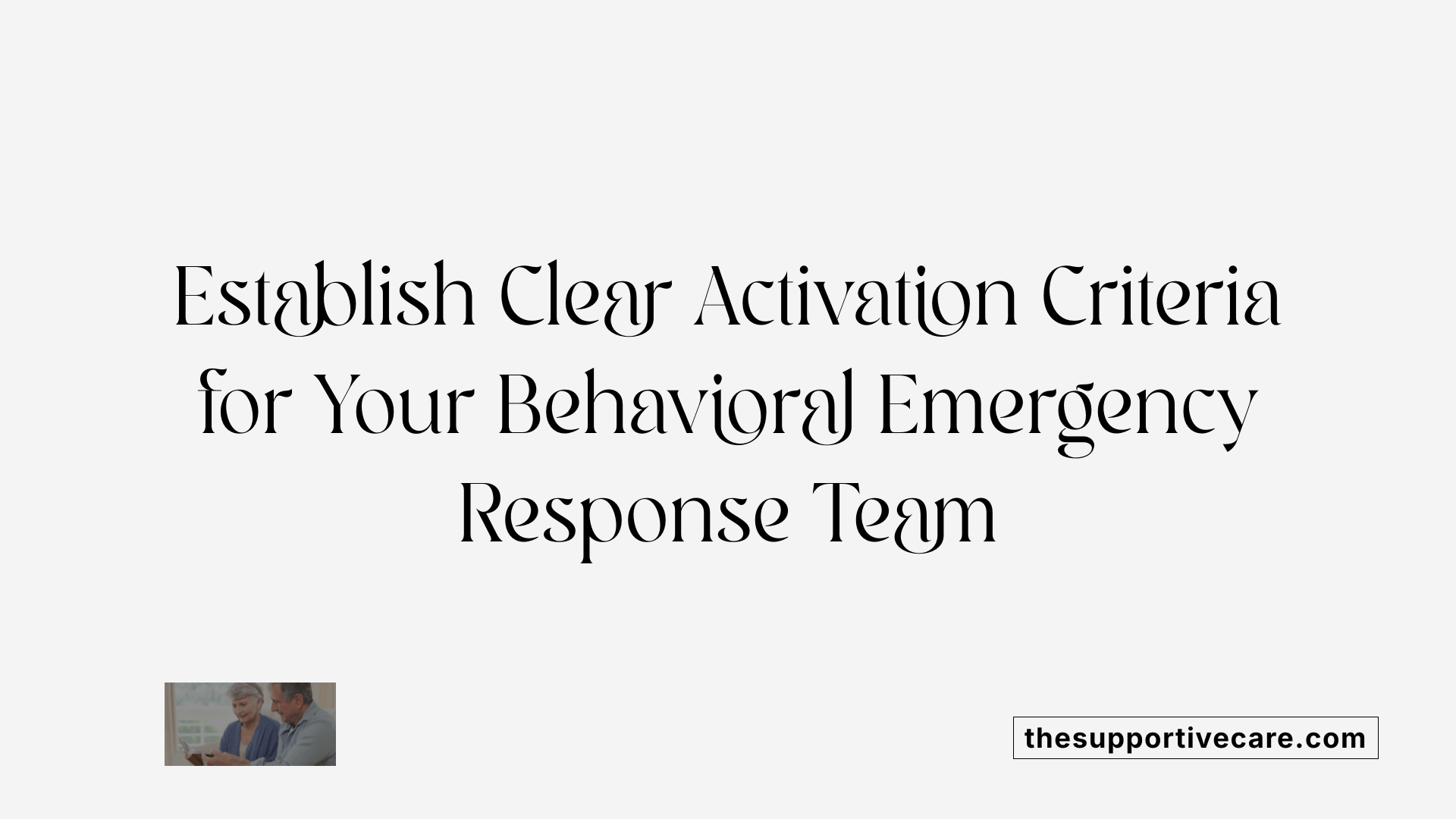 The development of a Behavioral Response Team (BRT) in skilled nursing facilities involves several systematic steps designed to ensure swift and effective responses to challenging behaviors. First, facilities need to set clear activation criteria based on specific behaviors such as yelling, demanding actions, threats, or assault. These behaviors signal an imminent risk that requires immediate team intervention.
The development of a Behavioral Response Team (BRT) in skilled nursing facilities involves several systematic steps designed to ensure swift and effective responses to challenging behaviors. First, facilities need to set clear activation criteria based on specific behaviors such as yelling, demanding actions, threats, or assault. These behaviors signal an imminent risk that requires immediate team intervention.
A critical tool in this process is the use of assessment instruments like the Brøset Violence Checklist (BVC). The BVC helps evaluate behaviors such as confusion, irritability, boisterousness, threats, and attacks, assigning scores to determine the severity and probability of escalation. When scores indicate a high risk, staff can activate the BRT according to predetermined protocols.
Building the team itself involves selecting a multidisciplinary group that may include charge nurses, mental health professionals, security personnel, and other trained staff members. Its members undergo specialized training in de-escalation techniques, trauma-informed care, and crisis communication. This training equips team members to respond calmly and effectively, respecting the resident’s dignity while ensuring safety.
Once trained, the team follows standardized response procedures, which include conducting pre-intervention huddles, supporting staff during incidents, and performing structured debriefings afterward. Documentation is an essential part of the protocol, involving detailed incident reports to analyze triggers, responses, and outcomes—these records support continuous improvement.
To maintain effectiveness, the team regularly reviews each incident, updates response protocols based on lessons learned, and provides ongoing staff education. Collaboration with facility policies ensures that all responses align with legal and ethical standards. Overall, a well-structured BRT, supported by clear activation criteria, comprehensive staff training, and standardized processes, enhances safety and reduces violence in nursing facilities.
Key Components of an Effective Behavior Management Program
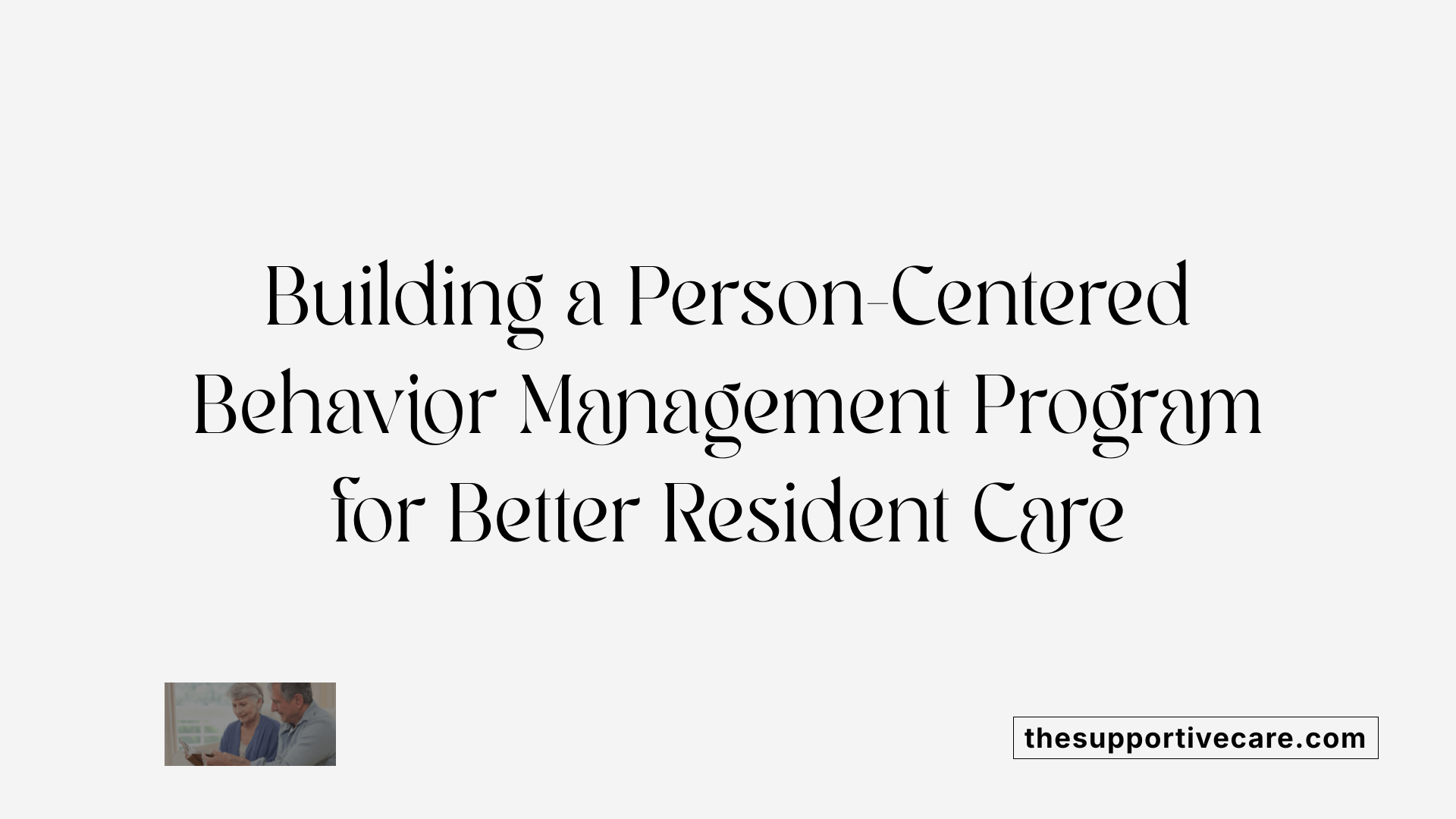
How should staff address challenging behaviors in resident care plans?
Staff should develop comprehensive care plans based on thorough functional assessments that pinpoint the triggers and purpose of challenging behaviors. These assessments help clarify whether behaviors serve functions such as seeking attention, escaping an activity, or expressing discomfort.
Interventions are then tailored to each individual, often involving communication techniques, environmental modifications, and positive reinforcement strategies. Building trusting relationships and providing a calm, reassuring environment are essential to de-escalate behaviors.
Person-centered approaches emphasize residents’ independence and preferences, enabling they to participate actively in their care plans. Calming and de-escalation tactics are integrated into daily routines to promote a sense of safety and trust.
How can organizations develop and implement behavior management programs in skilled nursing facilities?
Developing effective programs requires the use of evidence-based resources and best practices. Organizations should invest in comprehensive staff training on communication skills, de-escalation techniques, mental health awareness, and trauma-informed care.
Environmental modifications play a critical role in minimizing triggers for problematic behaviors. Involving residents and their families in the planning process ensures the interventions align with individual needs and preferences.
Consistency in staff responses and clear communication across shifts are vital for maintaining stability. Regular monitoring and evaluation of the program’s effectiveness allow teams to adapt and improve strategies continually.
Adopting a holistic, resident-centered model that considers medical, emotional, and psychological factors leads to better outcomes and reduces the reliance on restrictive measures. Continuous education, policy updates, and multidisciplinary collaboration are crucial components of successful behavior management initiatives.
This comprehensive, person-focused approach helps create a safer, more supportive environment for residents and staff alike.
For further guidance, search for "developing and deploying behavior management programs in nursing homes."
Developing Behavior Support Plans and Ethical Considerations
What should a Behavior Support Plan include?
A well-structured Behavior Support Plan (BSP) is essential for managing challenging resident behaviors effectively. It should clearly define the targeted behaviors, providing operational definitions and establishing a baseline of frequency and severity. A comprehensive functional assessment helps identify the purpose or function of behaviors, such as seeking attention, escape, or power.
The BSP must include specific, measurable intervention objectives tailored to each resident's needs. It should outline intervention strategies, including environmental modifications, communication techniques, and positive reinforcement plans. Regular data collection on behavior frequency and effectiveness of interventions is crucial for ongoing evaluation.
Input from a multidisciplinary team—including healthcare professionals, behavioral specialists, and the resident or their legally authorized representative (LAR)—ensures the plan respects the resident's preferences and rights. Procedural details for gradually fading restrictive practices, such as restraints or surveillance, must be explicitly stated, with criteria for modifications or discontinuation clearly defined. Routine reviews and updates are vital to adapt strategies based on resident progress or changes.
What are the ethical and safety considerations when forming behavioral emergency teams?
Forming behavioral emergency teams involves balancing safety with respect for residents' rights and dignity. Ethical principles such as beneficence—doing good—and respect for autonomy guide team practices. Emphasis should be placed on trauma-informed, person-centered care that minimizes coercion and maximizes resident participation in their care.
Training team members in de-escalation, assessment, and communication fosters safe, compassionate responses to behavioral crises. Protocols should prioritize non-coercive interventions, reserving physical restraints or restrictive measures as last resorts, only when necessary to prevent harm.
Clear policies and regular post-incident reviews promote continuous improvement and safety. Ethical response also involves transparent communication with residents and families about planned interventions and respecting their dignity. Such protocols help prevent harm, reduce staff injuries, and maintain trust, ultimately fostering a safer and more ethical environment for both residents and staff.
Training, Organizational Support, and Resource Utilization

What training and organizational requirements are essential for successful operation of a behavior response team?
For a behavior response team to operate effectively, comprehensive training is vital. This includes initial and ongoing education based on recognized standards like those from the National Behavioral Intervention Team Association (NaBITA). Key training components cover threat assessment, de-escalation techniques, proper documentation procedures, and referral pathways. Staff members need to be equipped with skills to recognize early warning signs of behavioral escalation and respond in a manner that prioritizes safety and dignity.
Organizational support is equally important. Leadership must actively endorse the team, clearly define roles and responsibilities, and ensure policies support both staff safety and resident rights. Regular team meetings foster communication and continuous learning, helping to refine protocols and address emerging issues. Additionally, policies that promote a culture of safety and resident-centered care create a supportive environment for crisis management.
Resources such as behavioral health specialists, mental health consultants, and external community partnerships further strengthen the team’s ability to handle complex situations. These collaborations provide additional expertise and ensure a coordinated response, which enhances resident safety and care quality.
What strategies are effective for creating and deploying behavioral crisis teams to improve resident safety and care?
Effective strategies for establishing behavioral crisis teams involve developing models rooted in community-based approaches, ensuring rapid and coordinated response capabilities. Training responders in cultural competence and de-escalation skills is crucial to addressing the diverse needs of residents with challenging behaviors.
Forming partnerships with law enforcement, mental health agencies, and other community service providers increases resource availability and ensures a comprehensive response plan. Developing local crisis protocols aligned with national guidelines helps standardize actions during emergencies.
Expanding access to behavioral health resources, including tele-behavioral health services, allows prompt expert consultation, especially in settings with limited onsite mental health staff. Implementing structured response procedures and conducting regular drills prepare teams for real-life crises, ultimately reducing violence and improving resident safety.
In sum, these approaches promote a proactive, well-trained response framework that prioritizes safety, respects resident autonomy, and fosters a positive care environment.
Impact and Future Directions of Behavioral Emergency Teams
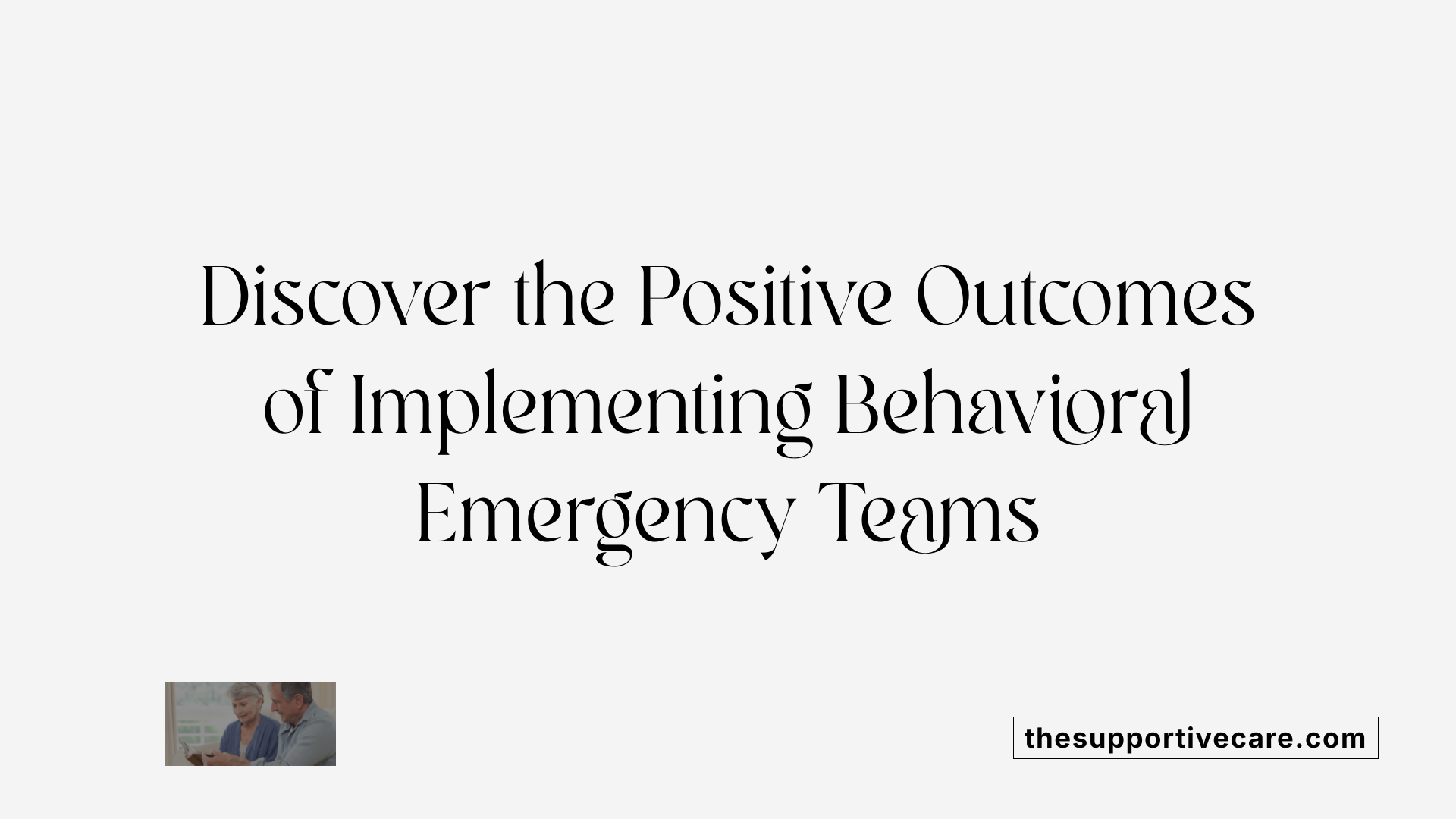
What are the outcomes of implementing behavior response teams?
The introduction of behavioral emergency teams, such as BERTs and BRTs, has shown significant positive impacts in various healthcare settings. These teams are associated with a reduction in violent incidents, injuries, and use of restraints, creating a safer environment for both residents and staff.
Implementation of these teams fosters a culture of safety by enabling rapid, coordinated responses to behavioral crises. They help de-escalate situations efficiently, often preventing the escalation of aggression, which not only minimizes harm but also increases staff confidence in managing challenging behaviors.
Furthermore, staff members report feeling more supported during crises, which reduces burnout and improves overall morale. The collaboration between multidisciplinary team members ensures that care is resident-centered, focusing on understanding the underlying causes of behaviors and applying tailored interventions.
How can facilities and policymakers support the development of effective behavioral crisis teams?
Supporting the growth and effectiveness of behavioral crisis response teams involves multiple strategies. Facilities should invest in comprehensive staff training on de-escalation, trauma-informed care, and communication skills. Clear policies and protocols must be established, outlining activation criteria and response procedures.
Funding is crucial; policymakers can allocate resources through grants, Medicaid waivers, or quality incentive programs that encourage facilities to create and sustain specialized teams. Interagency collaboration between health, behavioral health, and aging services enhances resource sharing and expertise, crucial for managing complex behaviors.
States are also leveraging existing programs like Money Follows the Person and Civil Monetary Penalty funds to support training, system enhancements, and innovative practices such as tele-behavioral health consultations. These investments improve capacity and service quality, ultimately leading to better resident outcomes and a safer environment for all.
Innovations and policy considerations
Emerging innovations include standardized response protocols, data-driven decision-making, and remote consultation models, which expand access and improve responsiveness. Policies that promote regular evaluation of team effectiveness and encourage resident and family involvement further strengthen behavioral crisis management.
Incorporating these strategies into long-term care facilities and hospital settings creates a resilient system that can adapt to evolving behavioral health needs, emphasizing ethical, person-centered care that ensures safety without compromising residents' rights.
Building a Safer, More Compassionate Environment for Residents and Staff
Developing an effective Behavior Response Team in skilled nursing facilities is vital for managing complex behaviors, safeguarding residents’ dignity, and supporting staff. Success hinges on comprehensive planning, staff training, ethical conduct, and continuous evaluation. As facilities embrace these strategies, they foster safer, more responsive environments that improve quality of life and care outcomes for all residents.
References
- Using a Behavioral Response Team on Non-Psychiatric Nursing Units
- Manage Behaviors in Nursing Homes by Understanding the Residents
- Building a successful behavioral emergency support team
- [PDF] Behavior Management Response Team
- F740 Elements of an Effective Behavior Management Program for ...
- Behavior Support Plan Requirements and Expectations
- Creating a Behavior Enhancement Program - Provider magazine
- Developing a Standardized Behavior Response Team on Medical ...
- Behavior management plans for challenging behaviors
- [PDF] ACLP-How-to-Guide-Creating-a-Behavioral-Plan.pdf













